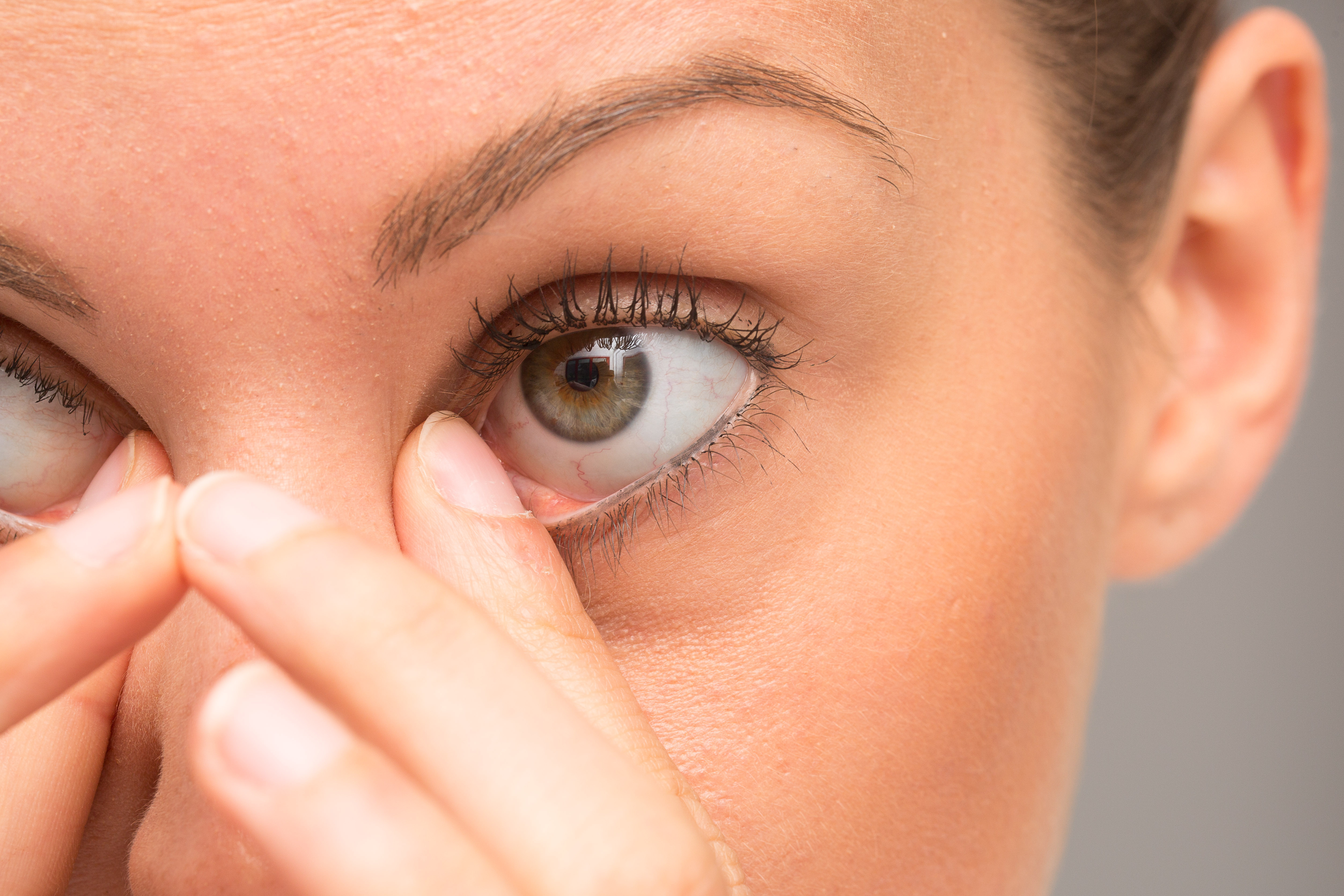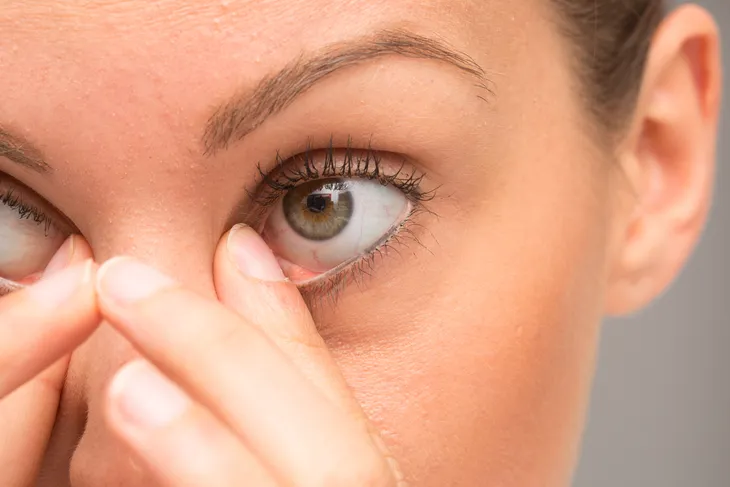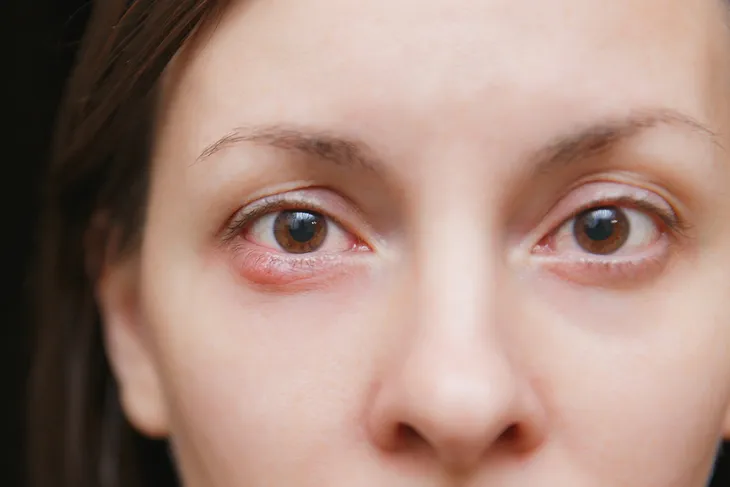Have you ever had what looks like a pimple growing on your upper or lower eyelid? If so, you probably experienced stye (clinically known as a hordeolum), and they can actually be quite painful. However, while they often heal on their own, they are contagious. But, there are treatments that can help eliminate them.
Most styes don’t cause any interference with vision, but, according to AllAboutVision.com, they can accompany other eye problems. Here are 12 common causes, symptoms, and things you can do about a stye…
1. It’s Usually a Bacterial Infection
AllAboutVision.com explains that styes are caused by staphylococcal (“staph”) bacteria, which is found in the nose and can easily be transferred to the eyes through rubbing them.
The source also explains that “pretty much everyone has this stye-causing bacteria in their body” and it’s possible to develop a stye without being contaminated by an outside source. Just to be sure you don’t infect someone else, it’s best not to share pillows, washcloths or towels.
2. It Can Have Another Cause
MedBroadcast.com explains that while the problem is most commonly associated with a bacterial infection, it can also be caused by blockage of an eyelash follicle.
In any case, styes are generally characterized by glands around the edge of the eyelid swelling into a small pimple or boil, which can cause eye pain and pus. There are actually two types of styes, which we’ll get to next.
3. Inside and Out
The same source (MedBroadcast.com) explains that an “ordinary” stye that’s visible is called an external hordeolum, and “begins by infecting an eyelash at the root (the follicle), unleashing a process that results in swelling.” This type of stye can also be caused by infection of the glands of Moll and Zeis located near the follicles.
Another more serious type of stye is called an internal hordeolum, which is not visible because it’s “buried in the central part of the eyelid” and can be more painful that its external sibling. A doctor may have to drain this type of stye.
4. There are Risk Factors
There are certain things you may be doing each day that can increase the likelihood of developing a stye, explains eMedicineHealth.com. For example, you might not be properly removing eye makeup, or you’re using outdated or contaminated cosmetic products, which can lead to infection of the glands.
Other causes may include inflammatory diseases of the eyelid, such as blepharitis, meibomitis, and acne rosacea. Seborrhea, which the source describes as excessive oily gland discharge, could also be a contributing factor. A stye can also be traced to stress and hormonal changes.
5. It Can Have Complications
Most styes are nothing to worry about, as annoying and unsightly as they might be. However, if there’s no improvement at all after 48-hours or the redness and swelling spread to your cheek or other parts of your face, call your doctor.
EMedicineHealth.com adds that the most common complication from a stye is called a chalazion, which it says is a “form of scarring of the glands in the eyelid that may include the formation of cysts.” This chalazion can be big enough to affect the cornea (the transparent front part of the eye) and interfere with vision. There have only been a few reported cases of a stye infection spreading throughout the body.
6. There are Medical and Self-Care Treatments
Drugs.com says that while a stye can clear up on its own in 2 to 4-days, antibiotic medicine can be prescribed as an ointment to treat styes, and should be used as directed.
Meanwhile, you can apply warm compresses to the eye area for 15-minutes or so to help reduce swelling and pain. You should also avoid touching your eye and not use makeup until the infection clears up. Follow daily hygiene practices including face/eyelash washing daily, and use a proper makeup remover in the future to help prevent the problem from returning.
7. Never “Pop” a Stye
Although a stye might look similar to a pimple, it’s not the same thing. So, you cannot treat it by simply “popping it.” In fact, doing this could be extremely harmful. Men’s Health talked to Ming Wang, MD, PhD, who explained that popping a stye could cause “the infection to spread to other parts of your eyelid or create cuts or abrasions in your skin, which give an opening for other infections to enter.”
According to AllAboutVision.com, there are cases that are more serious, such as when a stye forms inside the eyelid. This is referred to as an internal hordeolum. These styes might not heal on their own. If this is the case, go see your doctor because he/she might need to open and drain it. This is something that should only be done by a medical professional.
8. Clean with Tear-Free Shampoo
In most cases, a stye will heal and go away on its own, but there are a few tricks you can try to speed up the recovery process. If a warm compress doesn’t help treat the stye, try mixing tear-free baby shampoo with some warm water. Apply the mixture to a cotton swab or clean cloth and gently wipe it on your eyelids, then wash it off. Healthline recommends doing this every day until the stye is completely gone. Remember, only use gentle baby shampoo, not regular shampoo!
Of course, there are also over-the-counter saline and ointments you can purchase. But family physician Michael Rabovsky, MD, Chair of Department of Family Medicine, told the Cleveland Clinic, that the most tried-and-true treatment is the most inexpensive, which is the gentle baby shampoo method.
9. If It Comes Back…
As previously mentioned, a popped stye can lead to an infection that will require antibiotics treatment. Similarly, if a stye keeps coming back, WebMD says you’ll need to see a healthcare professional who will most likely prescribe an antibiotic cream or ointment. Be sure to carefully follow whatever instructions come along with it.
In more serious cases, a stye will need to be treated with minor surgery. “Sometimes you need minor surgery to completely drain a stye. After applying a local anesthetic to numb your eyelid (that means you won’t have to go to sleep), the doctor cuts it open and removes the gunk inside,” writes WebMD. It also goes on to say that the healing process is fairly quick.
10. Reach for a Black Tea Bag
If just a plain warm cloth doesn’t do the trick in healing a style, or even some gentle baby shampoo, try reaching for a warm tea bag. Healthline recommends specifically using a black tea bag because it “helps reduce swelling and has some antibacterial properties.”
To find relief, follow these steps: Make tea as if you are going to drink it. Boil water and pour it into a mug with a black tea bag. Steep the tea for about one minute, then allow the tea bag to cool before placing it on your eye. Leave it on the infected eye for about five to 10 minutes. Use a different tea bag for each eye so there is no cross-contamination.
11. Avoid Makeup and Contact Lenses
This one seems like a no-brainer, but it’s important! If you’re suffering from a stye, then your eye is already irritated. Do not cause further irritation by wearing makeup or contact lenses. Using either of these things will only delay the healing process.
When it comes to wearing makeup, simply avoid it if possible. Using the same brushes and products can “transfer bacteria to your makeup and tools and spread the infection to your other eye,” says Healthline. As for contacts, just stick with glasses until the stye is healed because similar to makeup, the bacteria from the stye can spread onto the contact lenses and further the infection.
To prevent styes from happening in the first place, wash your brushes regularly and throw away old products.
12. Prevention
Preventing styes is easy. It’s all about hygiene. The Mayo Clinic advises people to wash their hands regularly using soap and warm water or an alcohol-based sanitizer several times a day. Our hands touch many different surfaces throughout a single day, and many of them are not clean. So, try to avoid touching your eyes unless you know your hands are clean.
In addition, follow a simple but effective skin care routine that involves washing off makeup before bed and throwing away old cosmetics. For those who wear contacts, only handle them with clean hands and follow doctor’s orders when it comes to disinfecting them. The Mayo Clinic also recommends people who’ve had a stye before to apply a warm compress on a regular basis.















